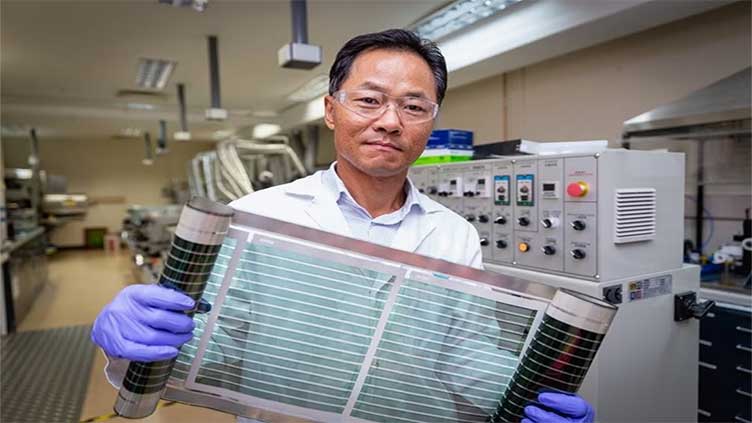Flexible solar panels achieve record-breaking efficiency

Technology
Lightweight solar panels are able to convert 11pc of Sun’s energy into electricity
(Web Desk) - Scientists have achieved a record-breaking level of efficiency for flexible solar panels using the so-called ‘miracle material’ perovskite.
The lightweight solar panels, developed by researchers in Australia and the UK, were able to convert 11 per cent of the Sun’s energy into electricity, making them suitable for commercial use.
Their flexibility means they can also be deployed in previously impossible ways, such as on curved roofs, awnings or even vehicles.
The international team – made up of scientists from the University of Cambridge, Monash University, the University of Sydney and the University of New South Wales – made the breakthrough using a new technique to print the solar cells on bendy rolls.
The Commonwealth Scientific and Industrial Research Organisation (CSIRO), an Australian government agency who led the research project, said both the scale and the efficiency achieved during the tests made it a “real game changer” for the renewable energy industry.
“The cells are printed using a roll-to-roll technique similar to newspaper printing, which allows for continuous, large-scale production,” the organisation said in a statement.
“The dramatic increase in efficiency has paved the way for commercially-viable perovskite solar cell manufacture at scale.”
Perovskite has been widely hailed for its potential to vastly increase the efficiency of solar panels, offering a theoretical limit of 43 per cent when combined with silicon compared to just 29 per cent for conventional silicon (PV) solar cells.
Last November, researchers in China broke the efficiency record for solar panel electricity generation using a silicon-perovskite tandem solar cell, reaching 33.9 per cent efficiency under lab conditions.
Despite being a long way off this record, the 11 per cent achieved in the latest tests is far greater than the efficiency levels of around one or two per cent that printed flexible solar panels currently offer.
The next challenge is to scale them up for mass production, with the researchers saying they could be used in everything from disaster relief to space exploration.



